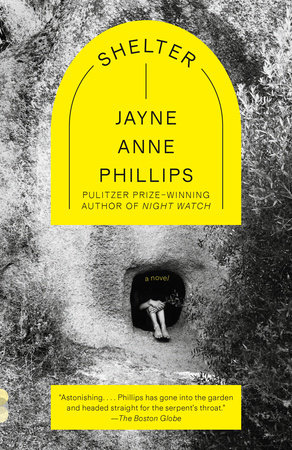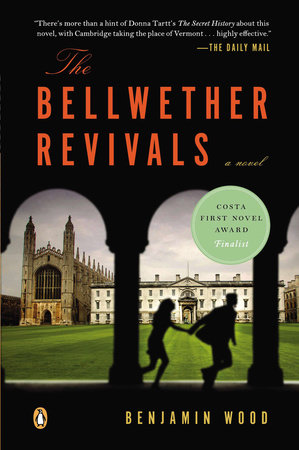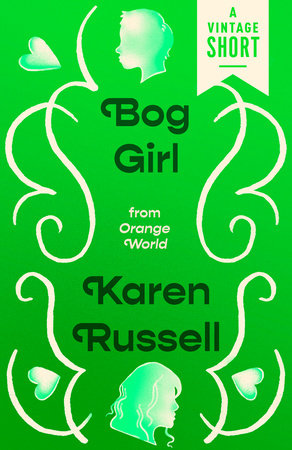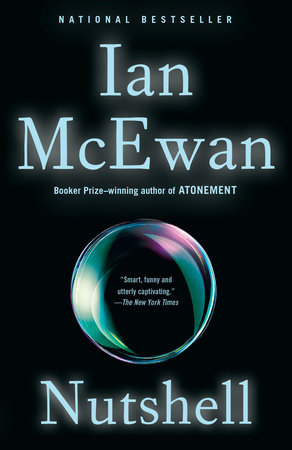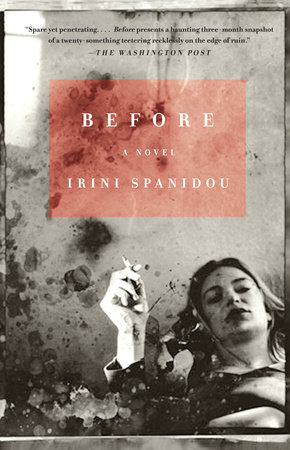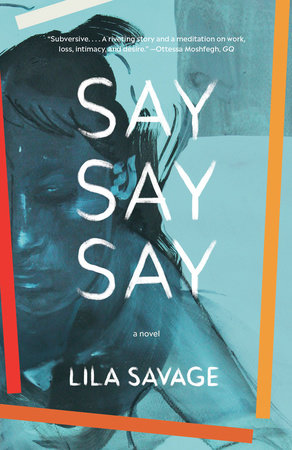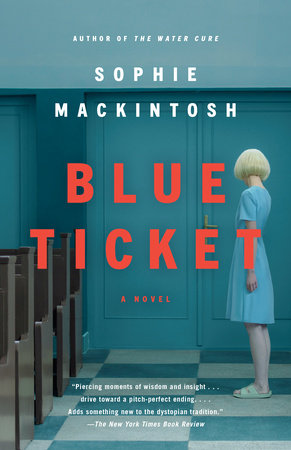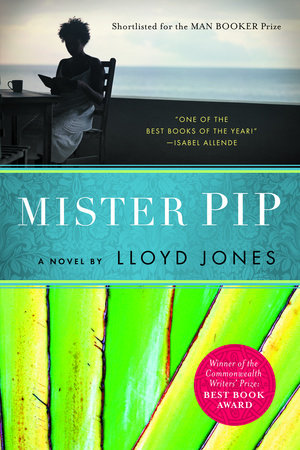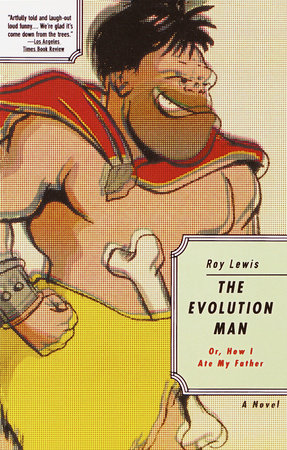Q: There is a unifying vision in your work, but each of your books seems to differ substantially from the last. Your British editor at Faber & Faber, Robert McCrum, has described SHELTER as “the best thing [she] has done, brilliantly and densely written, like a fugue. . . . It stands alongside MACHINE DREAMS in its exploration of the American psyche.” How would you describe the genesis of your new novel SHELTER? How does it differ from your other books?A: Shelter is a book I have wanted to write for fifteen years. The opening paragraph, which forms a sort of prefacing image, is set apart from the narrative because it existed long before the novel was written. I think I wrote Shelter in order to understand that paragraph. After Machine Dreams, which stretched over a duration of time and generation, I wanted to write a narrative which took place in the space of a few days, with the characters’ recent or even extended pasts included as internalized knowledge or mystery. I knew this book would concern a group of children who are isolated from their families and living within their own society. Together they would experience a rite of passage which rephrased the past and changed them. From the first lines onward—“The sky burned white to blond to powder to an almighty blue; the sun fell unobstructed. The girls wore heavy green shorts . . .”—the four girls were present for me. I only had to find out who they were. I wanted to investigate bonding, particularly between adolescent girls, but I didn’t want the focus to be that narrow. I saw each child as carrying a family burden or secret. I wanted to think about evil, the idea of whether evil really exists or if it is just a function of damage, the fact that when people are damaged, they damage others.Q: Parson is a frightening character, all the more because he proceeds within his own logic, according to a complex system of apprehended images and beliefs. Do you see the character of Parson as a kind of savior, a twisted angel, or a madman?A: It’s as though the answer to madness verges on madness. Parson sees himself as opposing powerful forces, and he must be more than himself to combat those forces. We all speak in the language we know. If Parson is an angel, he is certainly a mortal, damaged angel. He is telepathic, or even psychic, but his experience is framed in fundamentalist Christianity. He views the devil as an actual being able to “possess” the damaged in spirit, and he must defend himself from this same possession. In opposing Carmody, he is waging a battle for his own soul. Q: There’s a very disturbing scene in SHELTER between Buddy and his stepfather Carmody. Can you speak about the relationship between them? What was it like to write such a scene? Do you read that scene aloud?A: I read it aloud once, and I will not ever do so again. It should exist in silence, on the page. It is the dark night of the soul of a child, a child in terror, and the reader is taken inside that terror. The reader is inside Buddy, moving carefully, waiting for it to be over, psyching out the logic of the beast, and listening to the air in the leaves of the trees, watching that movement, the beckoning animation of the physical world, which is his source of strength. Later in the book, after the second scene at Turtle Hole, Lenny is leading the others through the cave and she begins to understand what prayer is. Buddy already knows; he doesn’t have to phrase it in language. Q: But you’re speaking of something beyond the Christian conception of prayer.A: Well, love is prayer, and rituals of strength, protection, or safety are prayers against vulnerability. Temporary protections, constantly renewed. Buddy has grown up with the language of ritualized prayer but it is the lines from the singsong Mam has used to put him to sleep or comfort him that he remembers as talismans . . . Up the airy mountain/down the rushy glen/we dare not go a-hunting, etc. He hears the lines in her voice, a voice deeply loved and trusted, and he connects them to his sense of the physical world, the world of the woods and the road that is his known universe, of which he is wholly a part.Q: Some might ask why Buddy doesn’t tell Mam, or someone, about Carmody’s victimization of him.A: I notice you don’t ask, though, which leads me to believe you know what I’m going to say. Child abuse, fear of it, knowledge of it, is a malaise of our time. We all know children often don’t tell, are not able to tell. Buddy is extremely, intuitively, astute. He sees that Mam is being abused by Carmody, invaded by Carmody. She is unable to help herself; how, then, could she help Buddy? He knows more about Carmody’s power over her than she does. He may even believe that his silence helps ensure the only safety he has left; her actual presence.Q: The inability of the adult world to protect its children, or even to resist victimizing them, is clearly a theme in SHELTER. The adult characters of Parson and Carmody have been deeply hurt as children. Buddy and the four girls have each been burdened with adult problems or secrets. This seems very relevant to what children experience in the 90’s, whether through family politics and divorce, assaultive mass media, or what has been seen as an increase in actual abuse. Can you comment?A: Children who are overseen rather than parented, who are drawn into the unresolved dilemmas of adult relationships, or who are confused by permeable boundaries in families, are not a new function of the 90s. Popular images of the 40s and 50s would have us believe that families once resembled Donna Reed or Father Knows Best. I looked at those images, but I never believed them. My own parents’ stories alone give the lie to that myth. It is true that women stayed home then; they were more often there to pick up the pieces. But that was mere damage control, not a real solution or understanding of the forces that shape families. What has changed now, drastically, is that extended family and community no longer exist for most children. This is true across class lines. For children growing up on the front lines of urban war zones, there is not even a modicum of physical safety. And none of us are safe from the derangement of tabloid driven, throw-away, violence-drenched popular culture. Surveys show that over 72% of American homes now own more than one television. According to my nine-year-old, many of his friends have their own TVs, in their rooms. Gone are the days when the family imbibed together. Children now watch television alone, prey to whatever spills over them.Q: In the summer of 1963, Buddy and Mam don’t seem to have a television set. Is this likely, or did you want to screen the world of the book from popular culture?A: Yes, obviously, the setting of the camp is a world apart, and Buddy and Mam live in that world, full-time, while the children at the camp only borrow it. Buddy goes to school and Mam works at menial jobs, and those activities have to go on in the world of Gaither, the nearest town. The seasons and the physical world are the cradle of their experience; in the early 60s they are still living as people lived up those dirt roads in the 30s, with the difference that Mam and Buddy are even more isolated , since the few families near them have left their dilapidated houses and moved away. In ’63, it’s quite possible Mam and Buddy didn’t have a TV; they wouldn’t have had any reception anyway, up that rural road, before the advent of cable, etc. They have the radio and a whole preserve of wilderness. Buddy has forged a self from his familiarity with that world. He’s able to defend against the outside world’s reductive image of him, and he finds in himself the strength and endurance to oppose terror closer to home.Q: What about Lenny? Is Buddy pulled toward her out of some intuition that she has experienced a similar darkness?A: For Buddy, it’s almost as though Lenny is news from the outside world, a special, extraordinary news, apprehended on his home ground. He picks her out and adores her. To various degrees, she is looked up to or desired by all the children. For Alma, she is the somewhat removed, more controlled, more perfect older sister, somehow defended against their mother’s needs. To Delia, she is a mostly unknown ideal. And Cap, lone child of an openly combative parental bitterness, clings to Lenny as a kind of loved prey. But nothing has quite reached Lenny for many years, and in this summer she begins to understand why. Her “darkness,” though, is quite different from Buddy’s. It’s not explicit now or clearly known, and it was experienced with a loved one, someone who should have protected her, not an interloper who was clearly destructive. Lenny begins to remember only atmospheric, dissociated images. I have my own ideas about what happened to Lenny, but I can’t know because Lenny doesn’t know, and the reader can’t know either.Q: Because SHELTER deals with children isolated from civilization, some readers have likened it to LORD OF THE FLIES, with the crucial difference that it deals with girls rather than boys. It is the girls who are “marooned,” at Camp Shelter, while Buddy seems almost a feral child, coming and going as he pleases in the woods, far more comfortable in the natural world, content that his only human relationship (beyond his observation of the girls at the camp) seemingly is with Mam. What do you think of the comparison of your book to Golding’s work?A: Golding’s children are menaced by the mystery of the unknown in the jungle of the island, but even more so by the “evils” within them. Supposedly innocent children, who might have created a utopia, break down into struggling tribes until they are rescued by a world no more “civilized” than they are. Shelter is a more optimistic vision, in that the children are seen as whole and “good” in their “savage” or original state; it is the adult world that threatens and damages them, on a number of levels. The “evil” is without, not within. They overcome, for a time, their separation from one another, and they bond together to meet what threatens them, without premeditation, almost by accident. They learn how little the adult world knows. Literally, they no longer look to the adult world to carry their burdens, or to absolve them. They learn things not supported or understood in the adult world. In fact, there is an inversion in which they protect the adults, at great cost to themselves. Alma’s whole being has been given to psychologically protecting her mother; her mother extends this to include the secret about Nickel Campbell, so that Alma must protect Delia as well. At the camp, when Lenny leads her through the cave, Alma actually experiences “shelter” for the first time.Q: Despite SHELTER’s rich language, a prose that is almost Faulknerian in its intensity, particularly in Parson’s sections, there is real suspense. That suspense arises from the reader’s sense that the children are imminently threatened. Parson, especially at first, seems to be part of that threat. He seems to struggle with the violence in himself, to ‘wrestle with the demon,” as it were. Is he part of the adult world, a world already tainted, struggling with its base impulses?A: Well, Parson struggles to stay “good”; he has a sense of evil trying to get to him, make him afraid, weaken his resolve. And there is this struggle, whether we see it as good or evil or as morality, as right or wrong, or as self-preservation versus the common good. Golding’s point in Lord of the Flies was that civilization is a struggle humankind maintains; it could be said that peace and war are sacred and profane cultural stances. But here is where the understanding of “good” and “evil” are shown to be most limiting. Peace is in fact a live process, a changing, adaptive, negotiated process, between nations as between individuals. Boundaries must exist because the self is so threatened by difference, and this fear is quite primal. Boundaries, between individuals or cultures, exist to provide a neutral space for communication, which in turn can relax fear, when it is clear that boundaries are respected. Then, exchange begins: identity is enriched and enlarged. The ideal is that differences be celebrated, recognized as manifestations of the “selves” within culture. Nations are simply organized tribes, and there are many tribes within a nation. Tribes embody history and story, blood, racial and religious similarity; they comprise a method of understanding, a way of receiving and interpreting information. When people are cut adrift from a common understanding of meaning, when they lose their “tribal” identity, they simply float loose. In modern life, cultural identities are created along economic, political lines: the creation of an underclass isolated from possibility of any kind, with family units desecrated by drugs, violence, and rage.I see the characters of Shelter as existing in a less extreme time, yet prefiguring what we see today. The social fabric of that time did not shield Carmody or Parson, just as children in extreme situations are not often shielded today. Now the isolation (or protection) of physical geography is almost completely broken down, and connection to place or history are even farther compromised.Q: The town of Bellington, West Virginia, setting of MACHINE DREAMS, is mentioned as being not so far from Gaither, the fictional town nearest Camp Shelter. How does place operate in your fiction? Why have you returned to a West Virginia setting, though a very different one, in this novel? And why do you so often write about children? Several stories in BLACK TICKETS, like “Lechery,” “1934,” and “Show,” have children as protagonists.A: It’s clear to me by now that, though I fled early, I am one of those people who never left home. And I see children as where we all start from, cleanly, before we collide with what we encounter. In stories, my children can come from anywhere. When I deal with children as characters in a novel, I see them in the context of a world, and my own childhood unfolded entirely in one place. I’m deeply grateful for that. But I think of the West Virginia I grew up in as being gone, lost in the same way my primal family is lost, has passed away. It’s become mythic territory, powerful beyond any boundaries. The West Virginia of this book could be any isolated, mountainous Southern region. The setting for Shelter is the physical world in that part of America, deciduous forest, the hills and mountains of the national forests of Appalachia. I grew up in a ranch-style house situated along a rural road, a concrete two-lane, and there were fields and hills around the house, and cattle, and a creek way down into the fields. We used to say we lived “out in the country,” as opposed to “in town.” And I did go to several sleep away camps as a kid, camps located in national forests, where the sense of the physical world was wilder and older. The camp in Shelter was an excuse to isolate children in that power and primacy, though the camp took on its own character.Q: It’s interesting to think that, in the fictional universe of the two novels, the lives of the characters are unfolding concurrently. MACHINE DREAMS has two sections that take place in 1963; Danner and Billy, siblings who are two of the main characters in MACHINE DREAMS, are children in those sections. Most of SHELTER takes place within a few days in late July of 1963, and the last section in early November of the same year. Why does this particular time interest you? Why is SHELTER set in 1963?A: Perhaps because that year represents the end of a period of time in which those houses miles up dirt roads would have existed in the same way I imagined the house that is Buddy’s and Mam’s; a box of a house, insulbricked or unpainted, with a porch on supports and a storage space underneath. A big room and a kitchen, linoleum flooring stapled down in one piece, wood stove in the middle. Wired for electricity, maybe plumbed, not so long ago. A radio but no TV. And because 1963 is so indelibly pressed into our national psyche. I turned twelve that summer. The Cuban missile crisis had happened the year before, in ’62, and nuclear war had been processed into children’s games on school playgrounds. Jack Kennedy had faced down the Russians; he was a prince who had overcome even virulent suspicion of Catholicism to win the presidential primary in West Virginia. Paper calendars hanging on the walls of those houses up the dirt roads had his picture on them. In late November, of course, his murder began the string of assassinations that marked the end of a national innocence. When I got to the end of writing the novel, I wanted it to finish before that. I wanted Shelter to exist almost as a precursor to that darkness.
